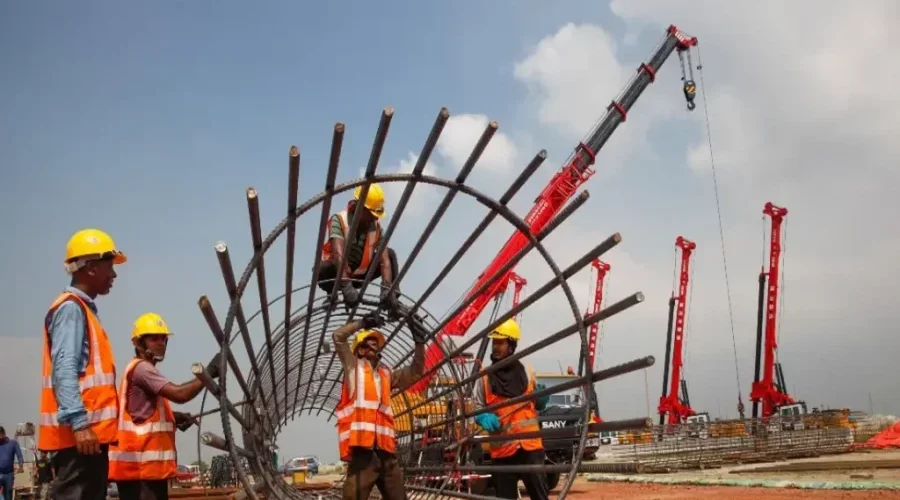The Minimum Wage Board says there are 44 industrial sectors with different minimum wages
RMG workers’ protest for minimum wage these past few months has brought a lot of attention to the issue. In the wake of almost crippling the industry, the government has set a new minimum wage for the industry.
Unlike most countries, Bangladesh does not have a single minimum wage structure that applies across the board. Different industries have different standards and they set their own minimum wage structure.
According to the Minimum Wage Board, there are 44 industrial sectors in the country where there are visible differences in minimum wages.
The board is tasked with setting the minimum wage and reviewing wages on a regular basis but while wages in certain industries, such as RMG have been set rather regularly, workers in other industries have been overlooked.
Wages in many sectors have remained unchanged for years and there are also questions about proper implementation.
According to data from labour organizations, there are 63.5 million workers in Bangladesh in various sectors.
Although the agriculture sector is the biggest employer, there is no separate wage board for them.
According to data from the Minimum Wages Board, there is wide variation in wages from sector to sector.
Among the notable sectors, RMG workers get Tk12,500 as minimum wage which was set on November 7 of this year.
Due to pressure from foreign buyers, government surveillance and strong labour organizations, wages are being implemented in this sector regularly but in other sectors, wages were fixed many years ago and it is alleged that the wages are not fully implemented in many cases.
The minimum wage in privately owned jute mills is Tk8,000 monthly which was fixed in 2022, in tannery, it is Tk12,800, fixed in 2018.
In the shoe and leather goods industry, the minimum monthly wage is Tk7,100 and was fixed in 2022, whereas those in the plastic sector are Tk8,000 and also fixed in the same year.
Workers in the construction and wood sector get Tk16,240 per month as of the 2021 minimum wage board and workers of sawmills get Tk17,900 from 2022.
In 2017, the government fixed minimum wages for the workers in the pharmaceuticals and tea-packaging sectors at Tk8,050 and Tk7,080, respectively.
Workers in the bakery, automobiles and aluminium sectors have been getting their minimum wages at Tk5,940, Tk5,930, and Tk8,700, respectively since 2018.
The minimum wages for the workers of re-rolling mills were fixed at Tk10,650 in 2020.
In most of the sectors, the annual increment is almost the same, 5% of the basic wages.
The minimum wages of type foundry and petrol pump were fixed in 1983 and 1987, respectively, whereas the minimum wages of engineering workshops and oil mills were fixed in 2010, salt crushing and cold storage in 2011, and match industries in 2013.
Among 44 sectors, workers from 10 sectors get wages ranging more than Tk10,000, from 21 sectors get between Tk5,000-Tk9,999, from 11 sectors get less than Tk5,000 and wages of two sectors (cement and ceramics) are yet to be fixed.
Bangladesh Institute Labour Studies (BILS) works on labour rights. Talking to Dhaka Tribune, Md Manirul Islam, director (research) of BILS said that there are differences among the wages of various sectors in the country.
He also said that the 44 sectors and their different wages and grading structure makes things complicated.
“In our country, usually wages are fixed through reactive actors, meaning demand or movements from any particular sector. The sectors with strong labour organizations have higher bargaining power. It also may be a cause of wage variations,” he added.
He, however, said that they are hopeful about some positive changes as the country’s socio-economic situation is improving gradually.
How is minimum wage fixed?
Sections 138-142 of the Bangladesh Labour Act of 2006 outline the composition and functions of the Minimum Wages Board, specifying the considerations and timeframes for finalizing minimum wages. The Board itself is not proactive; it commences its deliberations upon receiving proposals from both workers and employers.
These proposals are then forwarded to the Ministry of Labor for final approval.
There is also a provision to revise the minimum wage every five years.
The minimum wage is determined by taking into account the cost of living of the workers, the standard of living, the cost of production, productivity, the price of goods, inflation, the type of work, and risks.
It also considers the capacity of the businesses and the socio-economic conditions of the country and definite areas along with other relevant factors.







































Add comment